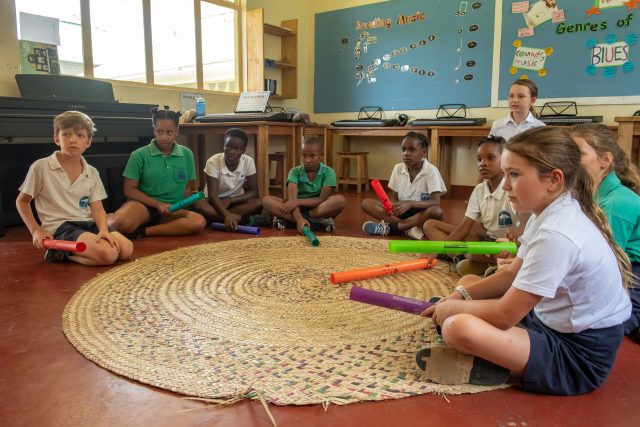While chatting with a friend who works in early education about what constitutes a “good” school, she presented a new idea to me:
“A school can only be good if it is considered diverse.”
I jotted the thought down and moved on to other things. Coming upon my note some days later, the simplicity of this idea struck me.
We measure and compare schools based on a range of different factors: enrolment, curriculum, school fees, average IB points earned, etc. These factors can help paint part of the picture that encompass schools, but there remain other metrics that may more accurately reflect what really makes up a school community: the students and staff.
For good reasons, diversity has become an important topic of discussion in international schools as of late. The awareness of the diversity’s value in institutions, particularly schools, reflects a positive trend away from homogeneity and an appreciation for different life experiences.

How can we measure diversity in schools?
International schools have the advantage of welcoming students from all over the world and they will often advertise the number of nationalities enrolled to promote their diverse student body. With some schools touting over 90 different nationalities, the student population certainly reflects a wide range of cultures from around the world.
While the number of different nationalities enrolled in a school can measure a certain degree of diversity, other metrics are important to consider. Measuring ethnic diversity through the Ethnic Diversity Index can provide schools with an insight into the racial makeup of their community and consider how this influences students’ experiences.
In addition to ethnicity and nationality, international schools can measure diversity within their communities through a number of other metrics. Linguistic diversity among students indicates another layer of heterogeneity in educational ecosystems, but one that is not-often mentioned in school brochures. Multilingualism in international schools provides opportunities for students to learn about new cultures and share their own.
Students’ socioeconomic background reflects another component of the diversity in international schools. Though for many institutions there is less range in families’ finances as a consequence of the large sticker price of many international schools. Schools offering scholarships fosters economic diversity, providing students from all walks of life the chance to learn from each other and grow together.

Parents are looking for diversity in schools
Families choosing from a range of international schools can be selective when looking for the right educational environment for their children. Parents understand the value in cultural exposure and multilingualism in their children’s schooling, which provides international schools an opportunity to celebrate, and leverage, this element of their community.
Cultural competency is recognized more for its relevance in the workplace and helps to create more inclusive spaces, promoting creativity and ways of thinking. This diversity of thought begins in the classroom in schools that value diversity in all aspects: languages, socioeconomics, etc.
Some schools have quotas to ensure they have wide representation from students around the world. Other school groups, like United World College, accept students from all corners of the world to promote global-mindedness.

The fundamental necessity of educational diversity
Schools, like ecosystems, benefit from diversity in that students challenge themselves more in diverse environments. While some measures of diversity receive more attention and some aspects of this can more easily be incorporated in schools, schools should strive to make their communities reflect the complexity of internationalism.
Only then can schools be truly considered ‘good’.
Furthermore, educators will benefit from teaching in cross-cultural, multilingual classrooms by stretching their teaching practices to ensure they can meet the needs of a diverse population. The benefits of teaching in diverse environments equate to professional growth opportunities for teachers looking to transition to a career in international education.
As a member of Teacher Horizons, you can pursue opportunities to teach in multicultural classrooms with students from around in the world, learning together under the same roof. Come experience the spectrum of diversity in international schools today.



